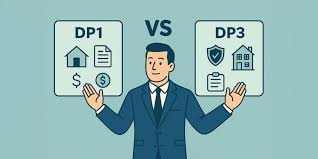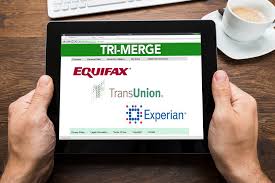Growing older can be an expensive proposition, complete with rising healthcare costs, home improvement projects, keeping up with living expenses, and paying down debts. For older homeowners, it may be tempting to find a way to use built-up home equity as a source of cash.
Home equity is an enormous source of wealth for older Americans. In fact, adults 62 and older held $6.5 trillion in home equity in the third quarter of 2017, according to data cited by Investopedia. With that said, home equity can be difficult to leverage as usable spending money.
For older adults, including retirees, a reverse mortgage may be one way to tap into this equity – though it’s important to keep in mind that reverse mortgages can be complex, and come with their own unique set of challenges to consider.
What Is a Reverse Mortgage, and How Does It Work?
In a regular mortgage (which may be thought of as a “forward” mortgage), you make payments to the lender over time in order to build equity and eventually own your home outright. In contrast, in a reverse mortgage, the lender dispenses payments to you, in the form of an advance borrowed against the equity in your home.
In other words, a reverse mortgage can enable homeowners to convert some of the equity in their home into cash, often tax-free. With a reverse mortgage, the owner keeps the title to the home, generally until the last surviving borrower dies, sells the home, or stops living in the home as a primary residence. At this point, the loan (plus interest and fees) must be repaid; often, this stems from the owner’s heirs selling the property, as the Consumer Financial Protection Bureau (CFPB) has explained. While the owner resides in the property, they are responsible for maintaining it and keeping up with ongoing expenses, such as property taxes, insurance, utilities, and maintenance.
There are several different types of reverse mortgages, which we’ll explore in more depth below. The most common type of reverse mortgage is a home equity conversion mortgage, or HECM. This is a federally-insured reverse mortgage backed by the U. S. Department of Housing and Urban Development (HUD), which can be used for any purpose. Broadly speaking, with HECMs (and other types of reverse mortgages), the borrower can choose from among several different payment options, including:
- Lump sum payment. The borrower receives all of the proceeds as a single disbursement, typically with a fixed interest rate.
- Equal monthly payments. The lender makes fixed monthly cash advances for as long as a surviving borrower lives in the home.
- Term payments. The lender pays fixed monthly cash advances for a specific time set by the borrower, such as 10 years.
- Line of credit. The loan proceeds are made available for the borrower to draw upon as needed, until the line of credit is used up. The homeowner pays interest only on the amounts that they actually borrow from the credit line.
- Combination of line of credit and regular payments. The borrower receives fixed monthly cash advances, and can access a line of credit if necessary.
Who Is Eligible to Apply for a Reverse Mortgage?
There are certain requirements that must be met in order to qualify for a reverse mortgage. For instance? In order to qualify for an HECM, as the CFPB notes, the borrower must be 62 or older. In addition, the homeowner must typically meet certain criteria, including:
- Must use home as principal residence
- Must either own the home outright or have a low mortgage balance, able to be paid off using the proceeds from the reverse mortgage
- Must not be delinquent on any federal debts
- Home must be an eligible property type, and be in good condition
- Must maintain the property and keep it in good working condition, and pay ongoing property charges, such as taxes, insurance, and repair costs
Are There Different Types of Reverse Mortgages?
In a word? Yes, there are several different types of reverse mortgage products available, including federally-insured reverse mortgages, proprietary reverse mortgages, and “single-purpose” reverse mortgages.
HECMs are the most common type of reverse mortgage, according to data from Investopedia. These federally-insured reverse mortgages are backed by HUD, and can be used for any purpose.
Some lending companies also offer proprietary reverse mortgages, which are private loans backed by the companies that develop them, rather than the federal government. As the CFPB notes, these loans are “typically designed for borrowers with higher home values,” above the cap available under an HECM.
Finally, there are single-purpose reverse mortgages, which may be used for only one purpose, such as home repairs or property taxes, as specified by the lender. As the FTC explains, these loans are generally “offered by some state and local government agencies, as well as non-profit organizations,” and are a less expensive option designed for “homeowners with low or moderate income,” though they are not available everywhere.
Keep in mind, as Investopedia notes, that “reverse mortgages are a specialty product, and only certain lenders offer them.” Consumer protection experts encourage doing a significant amount of research, as loan costs and requirements can vary from lender to lender.
Finally, though they are sometimes confused, it’s important to note that a reverse mortgage is different than a home equity loan, or home equity line of credit (HELOC). Though both options allow homeowners to borrow against their home equity, HELOCs and equity loans have different fee structures and eligibility requirements.
What Goes Into Getting a Reverse Mortgage?
To go a little bit further? It’s important to keep in mind that, like other types of loans, reverse mortgages can come with upfront fees and ongoing expenses that can add up, including origination fees, servicing fees, closing costs, and mortgage insurance premiums.
It’s also important to remember that lenders will weigh a variety of factors when considering the amount that you may borrow with a reverse mortgage, including your age, the appraised value of your home, the results of a financial assessment, and prevailing interest rates. In order to attain a reverse mortgage, borrowers must also generally take a counseling course as part of the application process for an HECM, as well as many proprietary reverse mortgages.
Finally? It’s important to remember that while reverse mortgages may be a logical course of action for some homeowners, they are not going to be the right fit for everyone. It may be beneficial to consult with a trusted local resource, such as an experienced real estate attorney, to get their perspective and consider alternative options. Getting a second opinion from a valued, trusted source may also help you avoid some of the pitfalls that can come with exploring reverse mortgages – including the very real threat of scams and fraud. As Investopedia notes:
About Reverse Mortgages with Ben
Have any more questions about any aspect of reverse mortgages?
… We’d be happy to continue the discussion. Drop us a line or give us a call whenever you’re ready to learn more, or set up your free consultation.








